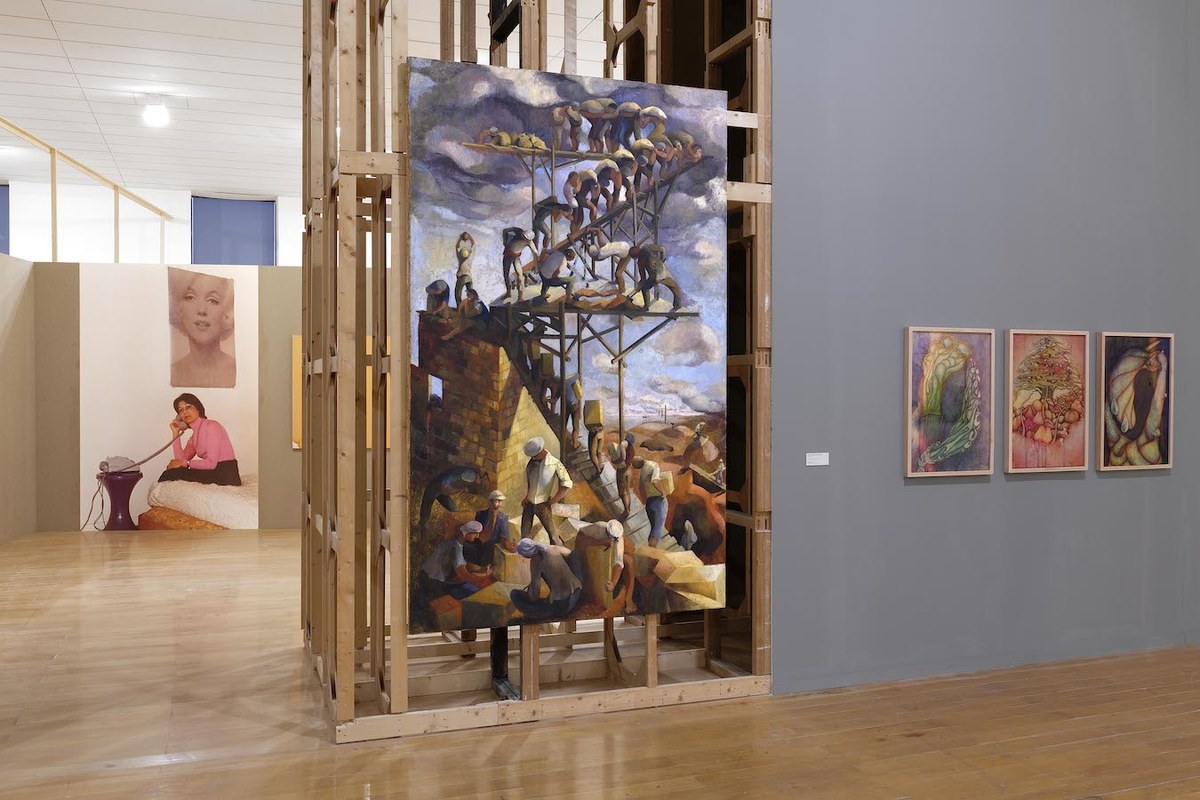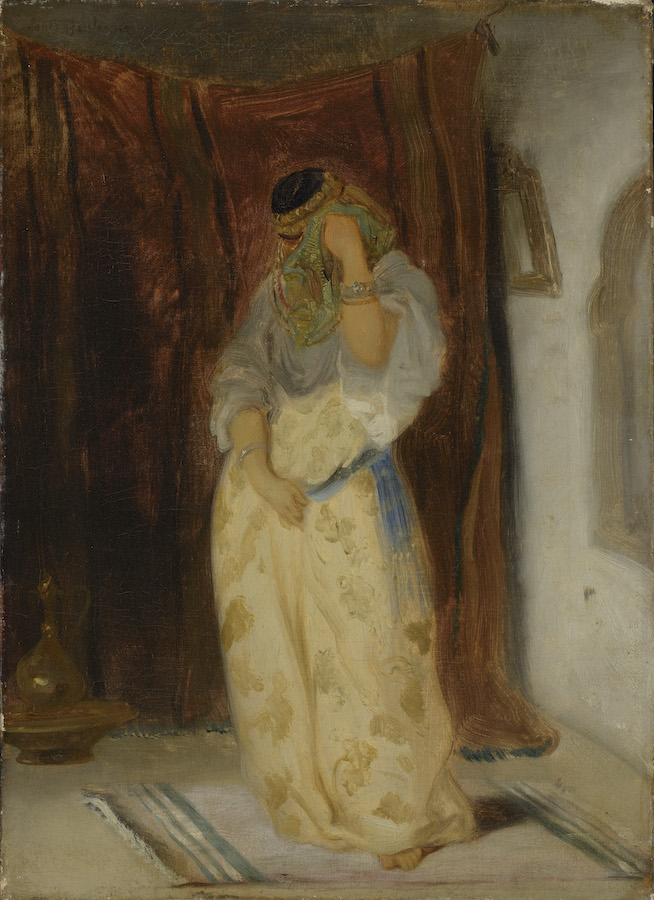DUBAI: When Sam Bardaouil and Till Fellrath began planning their curation of the Lyon Biennale, in March 2020, the world was just waking up to the dangers of COVID-19.
Naturally, the disruption and damage of the pandemic ended up having a major influence — not just logistically (it was delayed for a year), but thematically.
Bardaouil tells Arabian Weekly that the conversations he and Fellrath had with creatives all raised similar concerns. “We’re all so conscious of our fragility and our mortality, how vulnerable these structures we’ve built are — one virus and we’re building from scratch. So there was this sense of hopelessness. But, at the same time, people started to find ways of resisting.
“We thought it would be important to talk about how this consciousness of weakness could be the basis for a new way of thinking about forms of resistance that allow us to use this fragility as a stepping-stone, instead of always pushing it to one side and always wanting more, stronger, better.” Hence the biennale’s theme: “Manifesto of Fragility.”
Bardaouil, who now lives in Berlin, is a native of Beirut, which, aside from the pandemic, also went through financial and political meltdown and the horrific port explosion of August 2020 — all of which he believes has left the city’s inhabitants at a lower ebb than ever before.
The curators wanted to find a way of “shedding light on that antagonism that has been going on for decades (in Beirut) — between moments of prosperity and well-being and a sense of self-confidence and achievement, and these lows where you feel you’re at a dead end.”
But they knew they couldn’t simply shoehorn Beirut into the Lyon Biennale. As it turned out, they had no need to. History provided.

As the pair began to research ideas, they discovered the two cities have been linked for hundreds of years, ever since Lyon was a major center for silk production and the area around Mount Lebanon became a vital source of raw silk for the local merchants. “In terms of size, it wasn’t the biggest,” Bardaouil explains. “But in terms of how much power they had to monopolize the market, it was very important.”
Wealthy families in Lyon began to acquire land in Lebanon, where they built factories for raw silk production. By the 1850s, it was a vital export and Lebanon’s farmers shifted away from food crops to plant mulberry trees.
But then came the First World War. “And then,” Bardaouil says, “there’s starvation. Because you can’t eat the leaves of mulberry trees. So lots of people are forced to leave — this huge wave of emigration from Lebanon in the First World War to North America and other parts of the world, but also even earlier, because of (Lyon’s) monopoly, the farmers were always in debt to the agents who were supplying their money. So people started emigrating in the 1870s and 80s, and women started going into the work force. A lot of things we see today — the social standing of Lebanese women; emigration; the rise of families who are still some of the most dominant in politics and society — all go back to the silk and Lyon.”

The ties deepened: Lyon’s silk merchants affected the selection of the first French High Commissioner in Lebanon, and supported the Jesuits who set up many of the country’s schools — not out of generosity, but to gain free child labor.
“It’s a very intriguing and ugly and beautiful history, all at the same time — a conflation of religion, politics, education and economy,” Bardaouil says.
The curators have highlighted that history with their customary flair. “We like to find entry points that bring a project into direct contact with its local context then branch out into something more universal,” Bardaouil explains. So the biennale is in three stages. The first focuses on an individual: Louise Brunet, a woman from Lyon who took part in a revolt in 1834 against the terrible working conditions of the silk weavers, got sent to prison, then emigrated to work in a silk factory in Mount Lebanon, where she led another revolt.
“For us she became this symbol of fragility and resistance,” says Bardaouil. “We thought, ‘How many Louise Brunets are there in the world, throughout history?’ She could be a black woman brought from Senegal to pretend to be the wife of some Zulu leader at the colonial exhibition in 1894 in Lyon. She could be a Japanese immigrant in America sent to a concentration camp after Pearl Harbor. She became a metaphor, a symbol. In this section, we’re talking about the fragility of race, the fragility of our bodies, of our desires. All these things.”

From there, the show expands to look at an entire city as a symbol of fragility: Beirut. Specifically its ‘Golden Age,’ from the end of the French Mandate to the start of the Civil War, in five stages, covering artists’ representations of Place, Body (including the women’s liberation movement), Form (the various styles that artists in Lebanon adopted), Politics, and War.
For the show’s third section, “A World of Endless Promise,” Bardaouil and Fellrath invited artists from across the globe “to think with us about our fragility and different forms of resistance. How do we move forward using this fragility as a platform? How do we live in the world?”
Through the works on display in the show’s middle section, Bardaouil says, “We wanted to celebrate these artists and say, ‘Look, this city has given so much. It’s been a major contributor to the language and practice of modernism.’ But at the same time, it’s a bit of a cautionary tale. Because if it was such a golden age, then how come we had a civil war just a few years later, the repercussions of which are still with us today?”
The nostalgia surrounding this period of Lebanon’s history is something Bardaouil has been familiar with since childhood — when clichés like “The Arab Riviera” or “The Paris of the East” were common.
“As a child, of course, your eyes sparkle; it’s so exciting to hear,” he says. “I grew up in the thick of the civil war, so this was completely alien. But, still, you absorb it and it inspires you. And, at some point, people stop questioning whether it’s true. Because you want to hold on to this idea that if it happened before, it might happen again — it becomes a form of potential redemption.”
While Lebanon did become a revered cultural hotspot in the Fifties and Sixties — home to an influx of activists, artists, writers and intellectuals who had no platform in their own countries — this brought its own problems, Bardaouil points out.

at the Lyon Biennale. (Supplied)
“It became a thriving place for all these ideas and projects and, at times, irreconcilable ideologies. And at some point, it became untenable,” he says. “There were people who were benefitting from this and there were people who weren’t. Some people felt empowered, some felt marginalized. And all these things escalated until it came to a head in 1975.”
Bardaouil talks of an “adoptive amnesia” that has afflicted his homeland. “This is one of the biggest issues we face in Lebanon,” he says. “It’s almost like a national myth. But once you start looking at it, you get a better understanding of why we are where we are. The problems of the moment are related to what happened back then.” The topics raised in the biennale can, he hopes, lead to “moments of crystallization.”
The attempt to open up such conversations can be seen as a form of activism, he argues, “because you’re trying to challenge people on what they’ve adopted as fact. And we can never find a common way forward if we’re all coming from completely different ways of thinking about our past.
“This is where this exhibition becomes about more than just beautiful artwork,” he continues. “It’s saying, ‘Wait! This is not as simplistic or linear as we think. It’s much more convoluted, and we need to disentangle it to find something we can all agree on.’”

